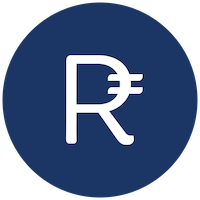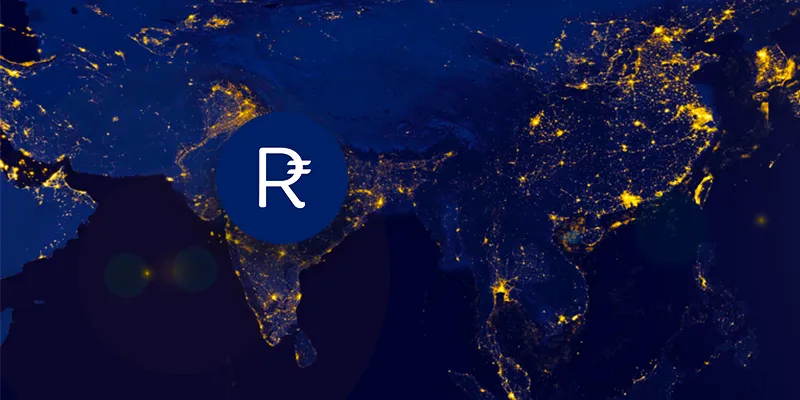
Rupee
View Brand PublisherThis new player in the cryptocurrency market wants to tap the potential of Rupee and South Asia
In the last few months, one of the many things that dominated the headlines, especially in India, is cryptocurrency. While Indian regulatory and government bodies have cautioned against it, they are also actively looking at working on a draft for regulating cryptocurrencies. There have even been unsubstantiated rumours about the government evaluating the possibility of introducing its own digital currency.
All these developments point to an ever-increasing interest in cryptocurrencies and the fact that it is likely to see scale in adoption and use in India. And if you thought the Indian market is not mature enough, that’s simply not true. Market watchdogs say one of the world’s leading cryptocurrencies, Bitcoin, is being traded in India at a much higher rate than the international market.
Riding on this increased interest and enthusiasm in cryptocurrency is ‘Rupee’.
The Rupee in reference is not the fiat currency that is backed and issued by a number of Asian countries, including India. It is not a startup or an Initial Coin Offering (ICO). Rupee Coin is a decentralised, open-source blockchain cryptocurrency coin. It is based on the proven and reliable Litecoin source code and is presently available on several exchanges. It trades under the symbol RUP. First launched in 2016, today there are roughly 22 million Rupee coins in circulation.
It was Adam Syed who started Rupee coin in 2016. With a strong background in blockchain technology and software development, Adam believes that blockchain, with its potential to solve real-life problems in new and innovative ways, can power transformation across sectors – from asset management to exchanges and wallets to healthcare to banking.
“When I think about the future of technology, I see blockchain-based platforms, products, and services used by the masses. Blockchain is truly Internet 2.0. However, one blockchain solution, in particular, has stuck with me – cryptocurrency.”
Adam roots strongly for cryptocurrency as a means to enable cheaper, faster, transparent transactions, and thus facilitate greater levels of liquidity. And Rupee is his vision for a virtual currency for South Asia. Adam, who has been leading Rupee since its inception in November 2016, says, “The opportunities that decentralised cryptocurrencies bring excites me. I wanted a cryptocurreny that resonated with the place I call home – India – as well as with the larger South Asian market.”
The other reason why Rupee is focused on the South Asian market is because of the unique challenges. The Rupee team wants to keep transactions fee as low as possible, while safeguarding the network to provide cheaper transactions. They also want to keep Rupee truly decentralised and ensure that the Rupee code will always cater to the needs of the common people of South Asia. The Rupee team also intends to contribute a portion of their revenue to charity in South Asia.

Rupee is sourced from Lite Coin, and is based on the Scrypt mining algorithm. Currently, there are ASICs for Scrypt. To put it simply, laypersons can’t mine Rupee with a simplistic GPU because a GPU can't compete with the power of ASIC mining. But the team is working on changing the mining algorithm from Scrypt to Equihash so that everyone can mine with readily available computing power. It will also make Rupee stronger and bring down the possibility of an unscrupulous mining attack by a staggering 51 percent. This will also ensure Rupee is decentralised.
Says Adam, “Today, some leading cryptocurrencies are heavily mined, making it difficult for regular investors (to mine them). Additionally, the transaction fees are too high, making it unaffordable. Thus many big cryptocurrencies have become more like digital assets, and less usable.”
Currently, Rupee trades with the abbreviation RUP. It is being traded on two exchanges – coinexchange.io and cryptopia.co.nz – both of which are mid-level exchanges. Rupee has applied to bigger exchanges like Bittrex, and Poloniex. It has also been listed as one of the best cryptos to invest in by TOKEN AI – an Artificial Intelligence-based cryptocurrency trading platform. An upcoming exchange in Europe called NEXT has listed RUP as one of its initial coins for trade, along with Bitcoin and Litecoin. “The exchange will go live sometime in 2018 and will provide us a lot of exposure.” The team is also in touch with trading exchanges in India, and hopes to be listed soon.
The world’s fourth-largest cryptocurrency exchange, Binance, selected Rupee for its Community Coin of the month challenge in November, 2017. “This is a testimony of our efforts. Being recognised by such a huge platform even though we have just started our journey, says a lot about the potential of Rupee,” says Adam.
“Rupee” is not only a cryptocurrency, but also a strong powerful brand with 2600 years of history in South Asia. Having originated in India in 6th century B.C., it became the most accepted form of currency as trade spread from India to countries in South Asia. And, soon it became the symbol of trade for the region. Today, Rupee is the common name of fiat currencies in India, Pakistan, Indonesia, the Maldives, Mauritius, Nepal, the Seychelles and Sri Lanka, and holds a strong emotional appeal for people belonging to the region. And, this is one of the reasons why the Rupee coin is gaining a lot of interest from the South Asian community based in the United States, Europe, and across the world. A lot of merchants in the US and Canada are particularly excited about Rupee, and want to accept Rupee as payment for transactions as soon as the Rupee mobile wallet is ready.
Explains Adam, “The other reason why we have managed to garner interest in that region is because most of the Rupee team in the US and Canada are of South Asian ethnicity. They are rooting for Rupee as an established trade symbol in the cryptocurrency world, because for many of them Rupee is an extension of their identity.”
This popularity is beginning to reflect in an increase in Rupee’s value. Until August 2017, it was trading at 0.004 USD, and today it has stabilised at almost 0.3 USD (30 cents), which is almost a 7500 percent jump in value from when it initially started out. The all-time high for Rupee was 0.94 USD.
Adam and his nine-member strong team have a blueprint in place for growth. They want to start a portal called Rupeebase.com, which will bring together merchants from countries like India, Pakistan, Indonesia, Nepal and Sri Lanka, whose fiat currencies are also known as Rupee. Rupeebase.com will utilise the Rupee coin and smart contracts to enable a trustable exchange among users and vendors. Vendors will also have the option to get paid in real time, either in Rupee coin or fiat currencies.
Apart from this e-commerce portal, the Rupee coin itself can provide a cheaper alternative for overseas money remittances.
Adam says, “With smart contracts and cryptocurrencies becoming the next big thing, we believe a platform like Rupeebase.com can revolutionise trade in South Asia, especially India.”







